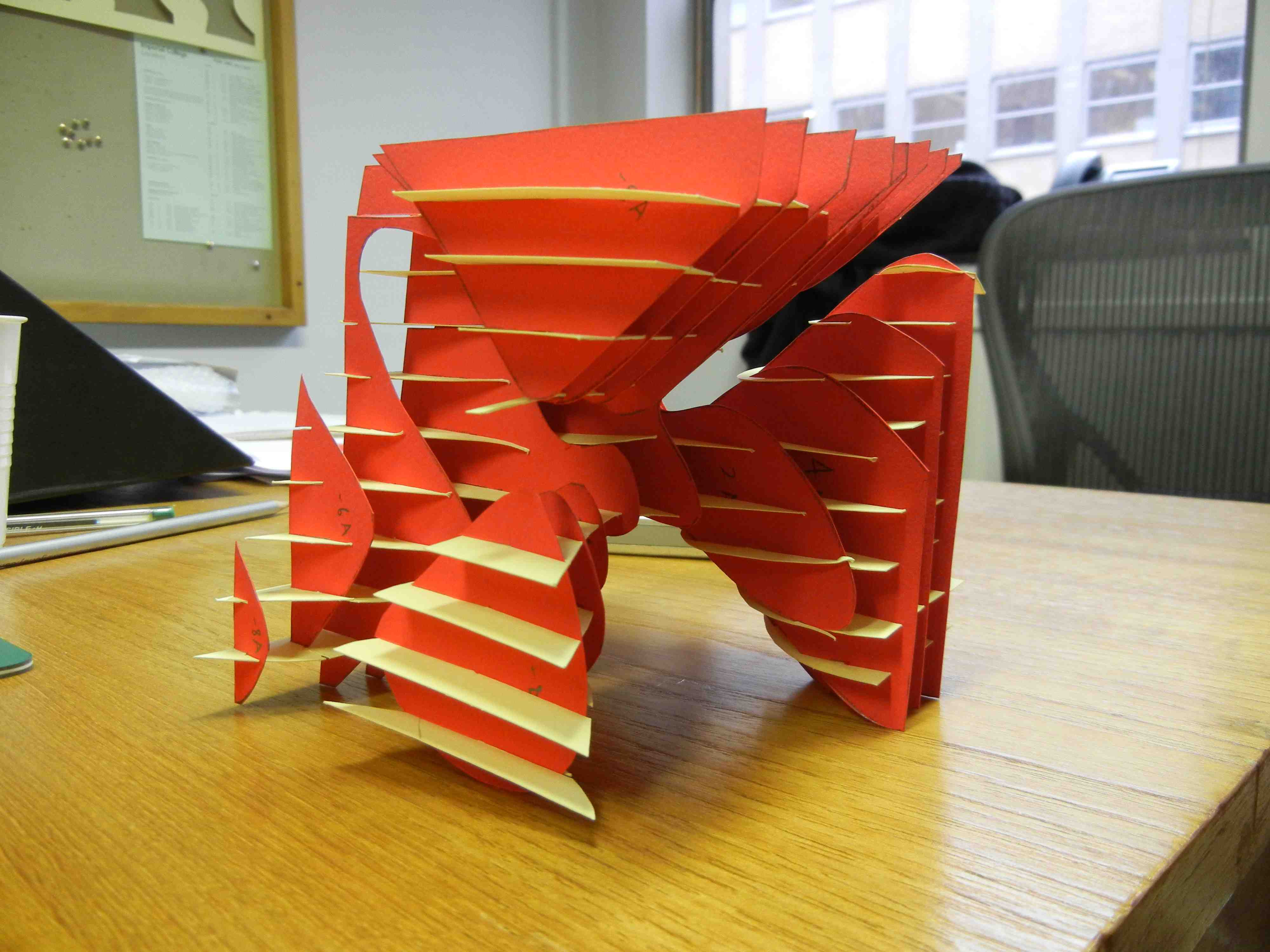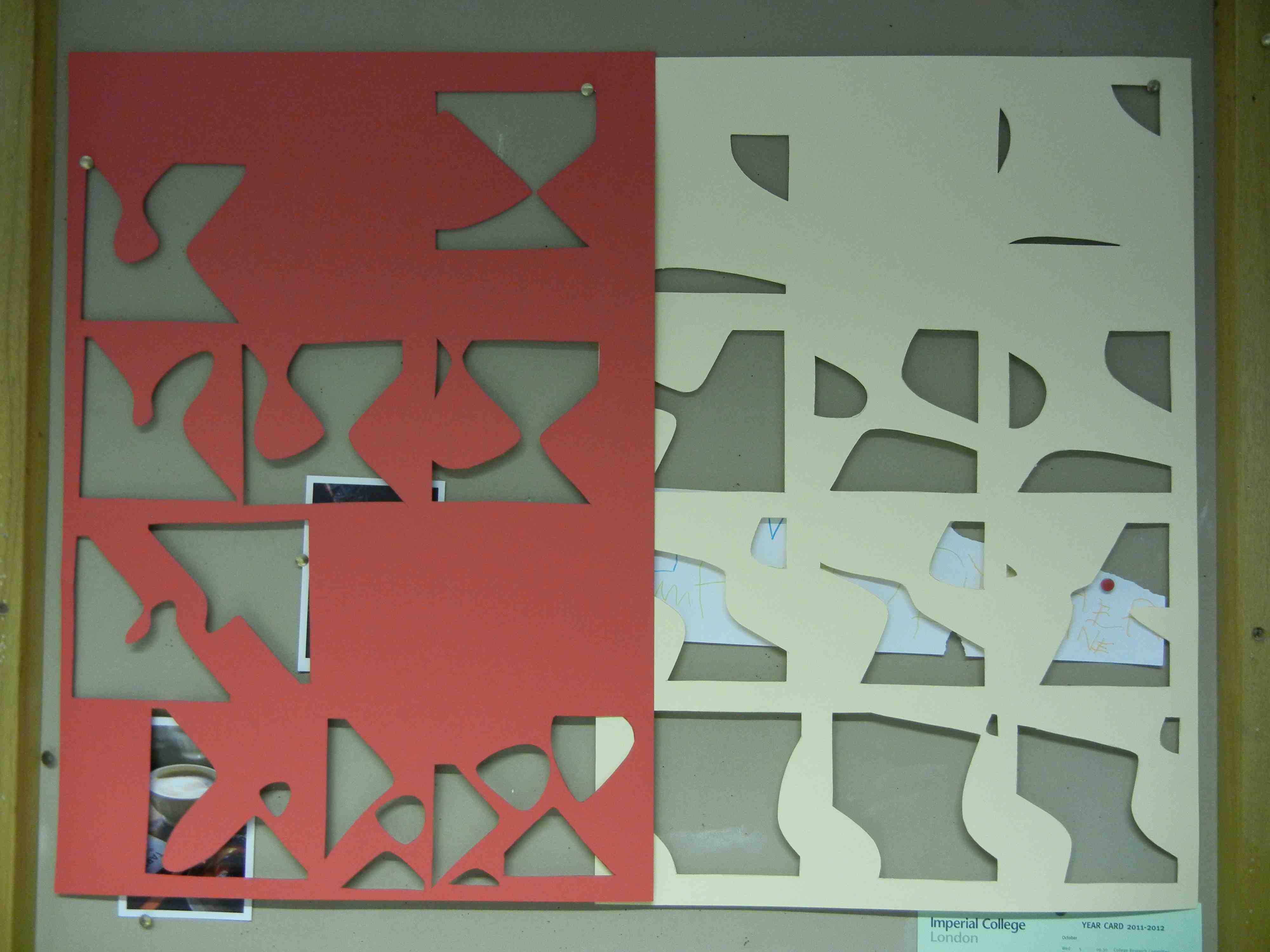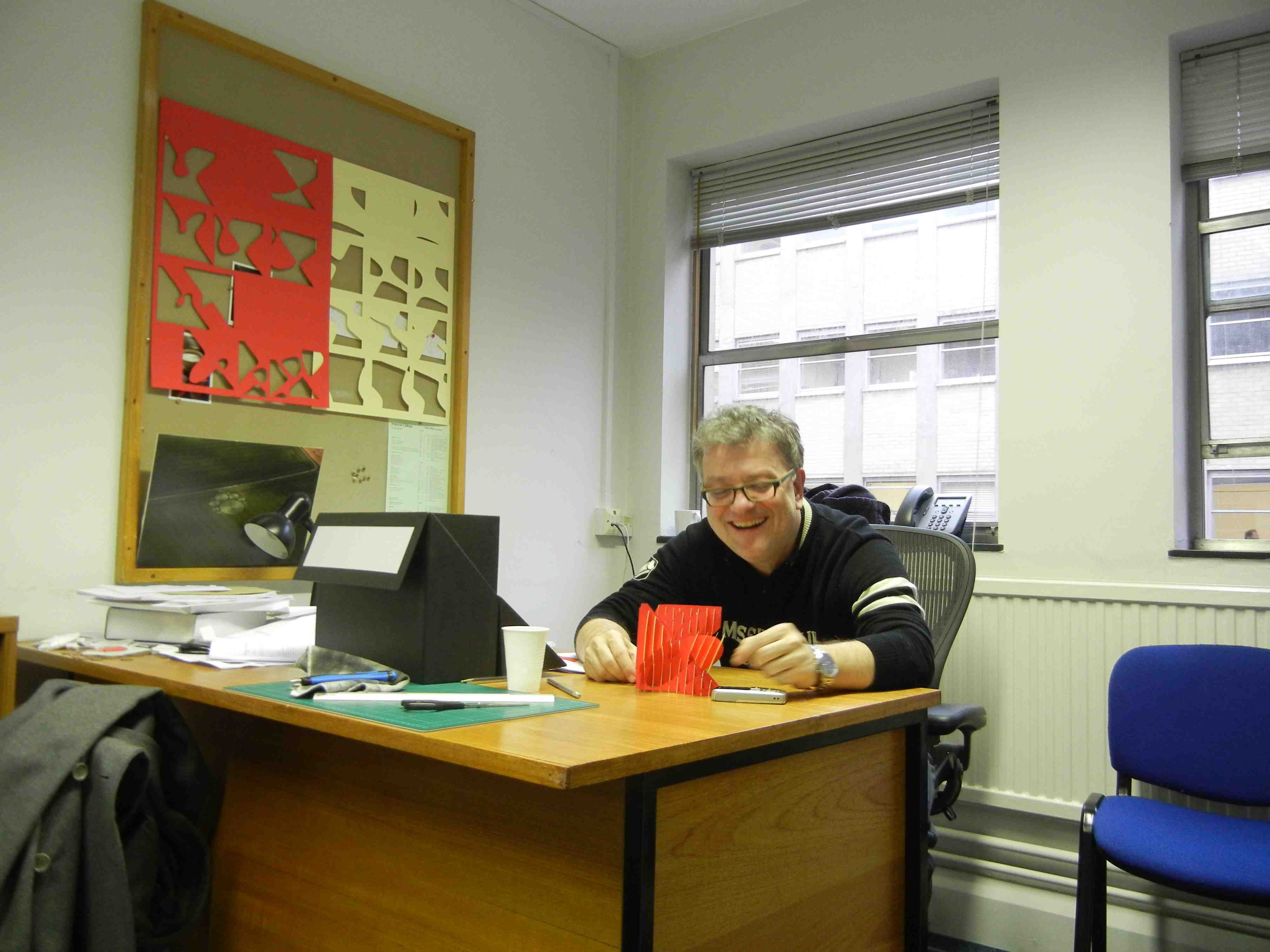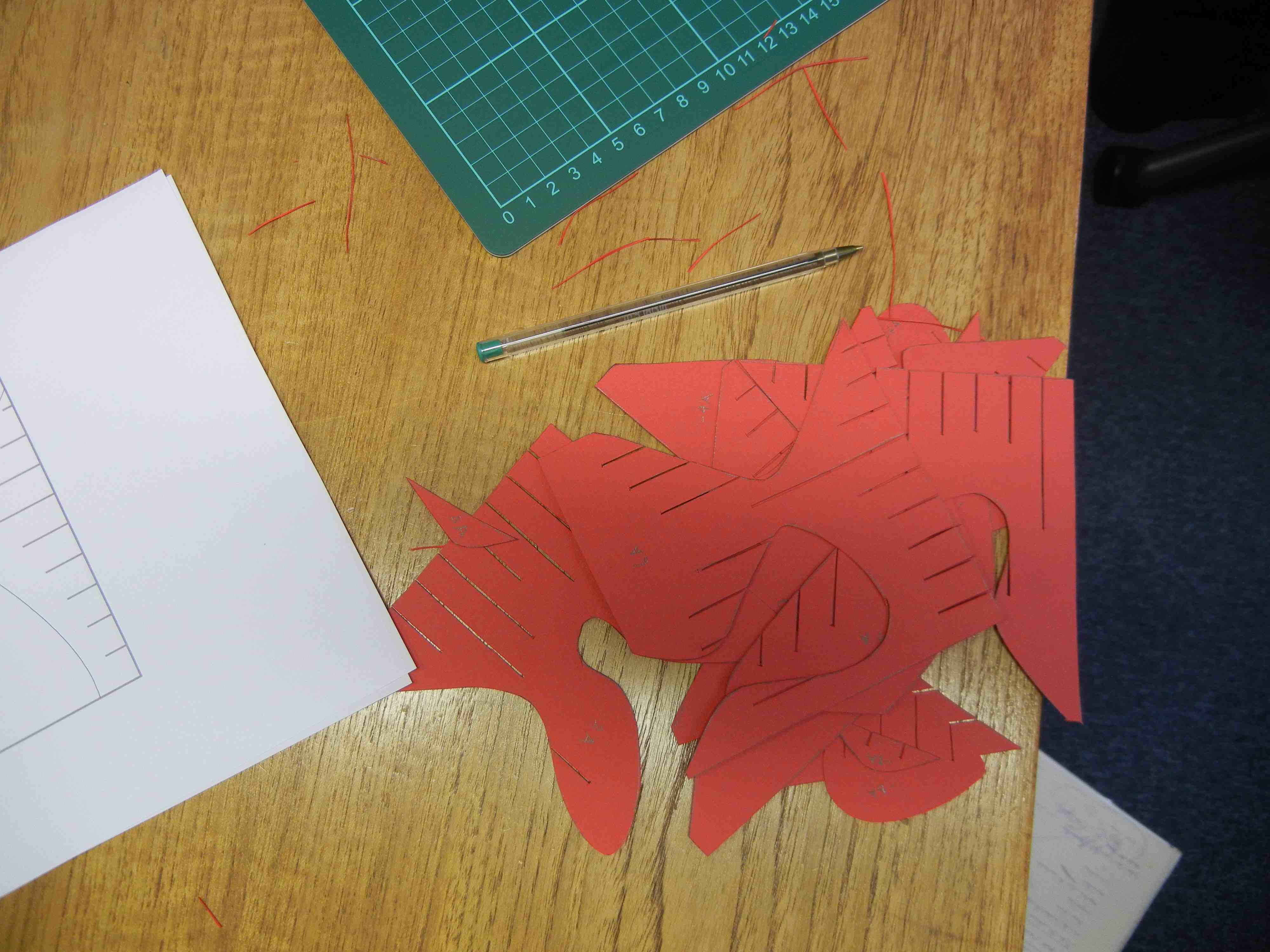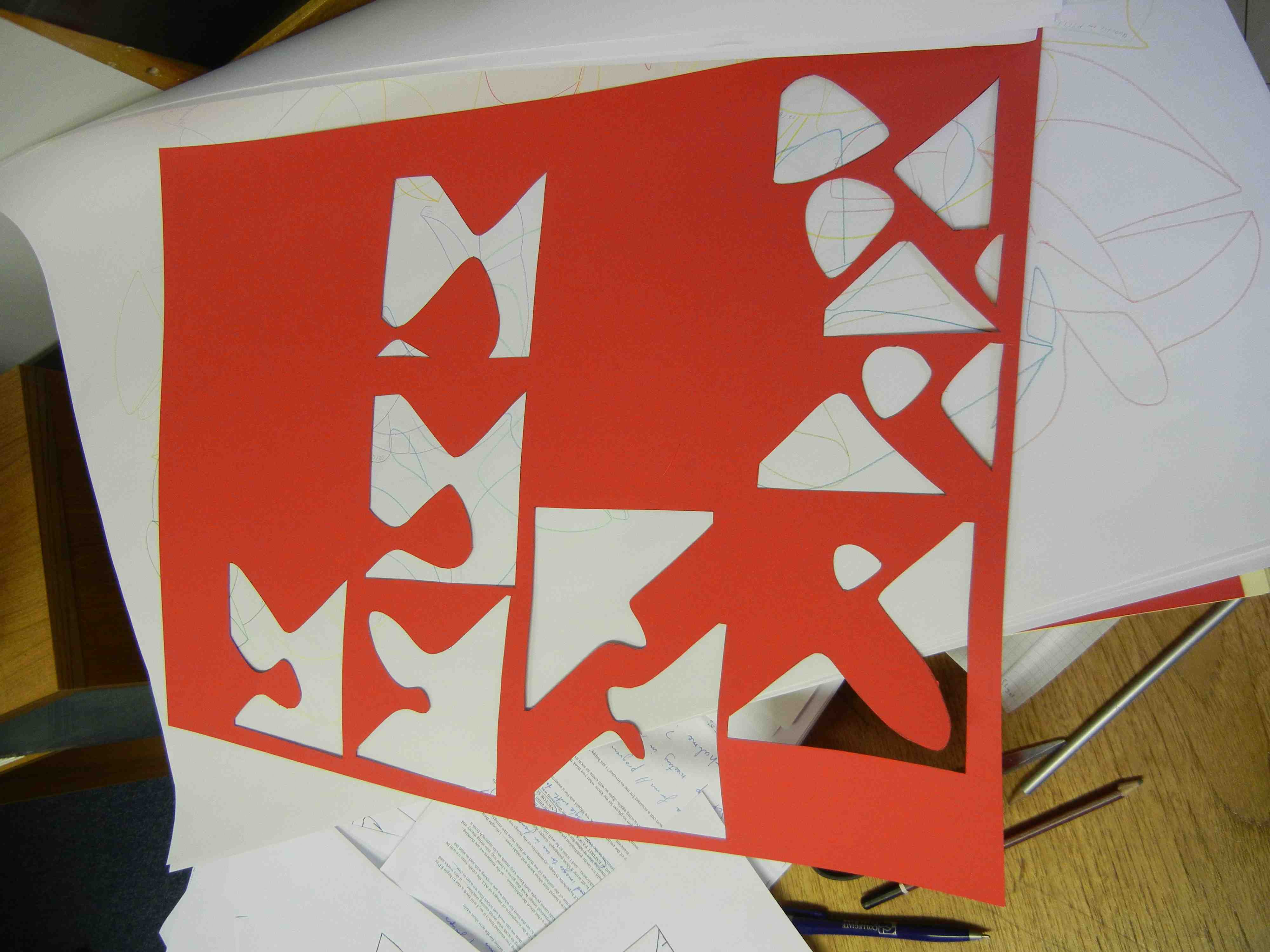Sliceforms of Calabi Yaus
In December 2011, at the Royal Society (London) Tom, Al and I discussed the possibilities of creating Sliceforms of Calabi-Yau forms. Sliceforms are geometric models constructed from interlocking sets of planar pieces. The basic idea behind sliceform construction is indicated in the photos. By creating two sets of slotted pieces (“slot-from-the-top” and “slot-from-the-bottom” sets) that intersect at right angles, one can link the two sets together to form models of surfaces and solids.
The Sliceform technique originated with a mathematician called Olaus Henrici who taught in London at the end of the nineteenth and early twentieth centuries. He made models using cross sections of quartic surfaces; these are similar to a sphere but have with cross sections which are ellipses, hyperbolae or parabolae.
Models were constructed for sale in Germany by the firm of Martin Schilling. These were designed by Alexander von Brill in Darmstadt. In the nineteenth century mathematical models (paper/wood/ceramic) were made for teaching and understanding geometry. They where also inspirational to artists such as Barbara Hepworth and Naum Gabo.
The Science Museum (London) exhibits a collection of Sliceforms from the 19th century to the present day (by Brill and John Sharp) they have an austere and utilitarian beauty, and where the original inspiration for developing sliceforms of the Calabi-Yau forms with Tom and Al.
Once I had cut the pieces of the sliceform out Tom cleverly pieced it together and you can see Tom and Alessios’ delight in the model…
